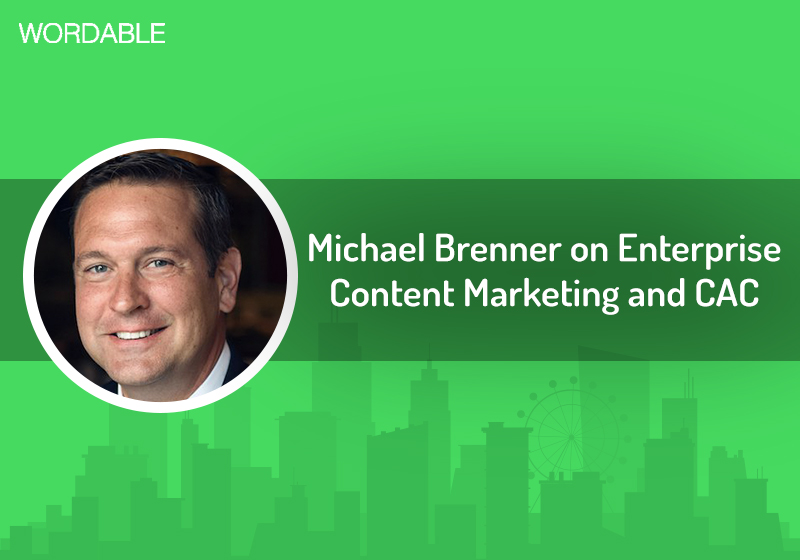
Michael Brenner is the CEO and founder at Marketing Insider Group, which helps brands architect, craft, and deliver content marketing programs to reach, engage, and convert more customers.
He is also a highly in-demand public speaker and the author of The Content Formula.
Previous to that, Michael was the Head of Strategy at NewsCred and held executive positions at both SAP and Nielsen. He has an unparalleled understanding of content strategy at the enterprise level, but also knows how to build programs from the ground up.
You can find him on Twitter at @BrennerMichael, on LinkedIn here, or on the Marketing Insider Group blog.

I feel like I’ve always been in content marketing just wasn’t always called that. I always cared more about what customers wanted to learn. I always created content that mapped to those educational questions because I found that people hate self-promotion and propaganda more than just about anything.
I started in sales and found that hard selling didn’t work for me. So I just asked my customers how I could help them. In marketing, I vowed to only do the things that delivered sales and ROI. That led me to learn about keywords and SEO, and ultimately what we now call content marketing.
Starting in sales made me appalled to the idea that marketing was just about making pretty pictures. I’ve always focused on identifying demand, showing ROI, and earning the right to have a conversation with buyers by creating quality content.
As the article you reference states, CAC is a relative measure. Every client I have ever worked with is wasting money on content that oversells on product and under-delivers on ROI. They all spend money on paid because they have little to no organic presence. And everyone one of them is seeing higher ROI with a consistent approach to creating more effective content. Can we all be Hubspot? No.

But almost every company out there has a long way to go before they become even just moderately efficient in their overall marketing spend. Content marketing is still producing higher ROI than almost any other tactic for my clients and magnitudes higher ROI than paid.
The formula is not difficult: if you want to reach, engage and convert more than you are today, you have to consistently create customer focused content.
Lots of smaller tech companies reach SAP’s or Hubspot’s audience by following this approach as well. Create engaging content based on the keywords your customers use, and the content they already read and share, and you can capture a fair share.
I used to say that content marketing is easy. But now that people pay me to help them with it, I have stopped. Haha. The bottom line is that the editorial bar is simple: answer your customers’ questions and they will engage. So what I learned is that anyone can increase their traffic, engagement and leads by just committing to this strategy.
I also learned that frequency is key. Blogging every day is exponentially more effective than blogging every week but the cost is only linear.

That’s why I sell affordable packages of quality content to keep the engine running for large brands and startups alike.
The best content marketers out there are all exhausted from trying to convince everyone of the ineffectiveness of paid-only approaches and the true compounding ROI you can achieve from content marketing. That skill is all about influencing sales and product people and executives of the business case for change. Easy to say. Hard to do.
Learn to write for your customers. Learn to communicate to executives.
Quantity has a direct mathematical impact on results. The more you write and publish, the better your ROI will be. This makes some people’s heads spin off. I’m not saying quality doesn’t matter. I have never tried to create a shitty piece of content. And quality is purely subjective.
But as Mark Twain says, “Deadlines are the greatest source of inspiration.” So define a frequency like 2 posts per week and the create the best you can on that schedule.
I look at my audience, the keywords they are using, the content they are sharing, and the sites they engage with. Then I try to model or reverse-engineer that content for them. Easy, right?
(Editor’s note: try a tool like Ahrefs for keyword research and analysis. If you want other options, check out our post on content marketing tools)
1. Reach your audience by knowing the keywords they are using when they search for answers to questions
2. Engage your audience with the types of content you know they are already engaging with and on the platforms they use
3. Measure your success by how many people are willing to subscribe to your content.
I saved 2 hours uploading this post from Google Docs to WordPress using Wordable. Try it here.